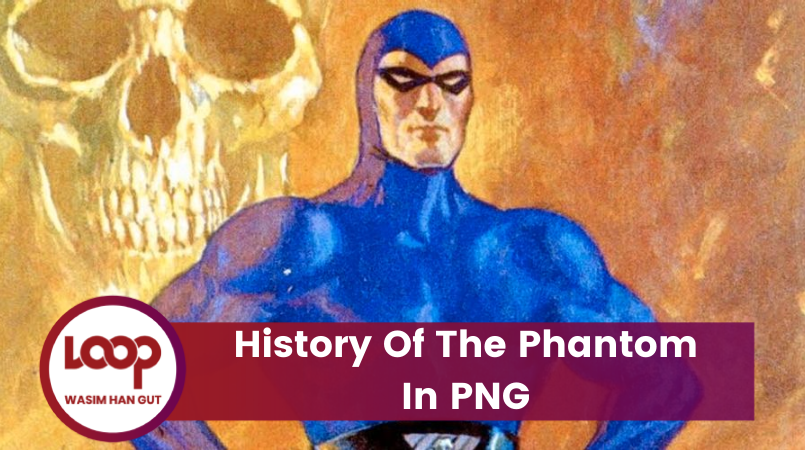
The Phantom was quickly outshone by Superman in the States, but in Papua New Guinea he's become a cultural icon and a symbol for the best warriors.
While the Phantom may have never reached the American icon status of contemporaries like Batman and Superman, in the Independent State of Papua New Guinea (PNG), he is the most popular superhero by far, and his influence is felt throughout the culture. Debuting in a comic strip by Lee Falk in 1936, the Phantom is considered by many to be the first costumed superhero. Beyond comic books and strips, the Phantom has been used in PNG public service promoting everything from literacy, to nutrition, to safe sex. The Phantom even found his way onto the shields of PNG's toughest warriors.
Introduced to the Highlands of Papua New Guinea during World War II, The Phantom comics had a setting and subject matter that mirrored the country's environment, setting them apart from the other superhero books available to the people there. The fictional tropical country of Bangalla, where the Phantom resides, is not unlike the PNG’s Highlands. But while Bangalla was created to be exotic, in PNG it was familiar, just as comic readers from urban locales could easily see themselves in Gotham or Metropolis. And much like Americans painted the likes of Superman, Donald Duck, and Popeye onto their combat vehicles, PNG tribes painted the Phantom onto their war shields.
After decades of peacetime in the Highlands, conflicts between the tribes arose again in the late 1970s. Enter Kaipel Ka of the Wahgi people, the go-to artist as battle shields were brought out of retirement in need of repainting. According to the short documentary The Man Who Cannot Die by Mark Eby, Ka took it upon himself to modernize their designs. He combined “the ideas of the white man and the man from the village” as he put it, and in doing so created an entirely new style of art known today as “pop tribal.” He incorporated everything from beer and soda logos to football clubs, but his most frequent subject was his and many of his peers’ favorite superhero, the Phantom.
The war shield was the most important weapon in the PNG Highland warrior’s arsenal. Cut from tree trunks and painted with brilliant colors, these shields not only served as protection, but as a form of self-expression. The Phantom was chosen because of his unmatched combat skills and his connection to his ancestors, who each passed the Phantom’s legacy down through the generations. The Phantom passes down his mantle to make it appear that he’s a “man that cannot die” as his nickname states, and because ancestral worship is a core belief of many Highland tribes, this deeply resonated with those beliefs.
In battle, The Phantom's image was reserved for only the best warriors in a tribe. According to Kaipel Ka, “The Phantom design was for those who led the battle, because those that led the battle are the toughest fighters, just like the Phantom.” However, as the warfare continued into the 1980s, firearms — both homemade and manufactured — were introduced to the battlefield. New shields were made from steel barrels and old car hoods, with the Phantom still adorning many of them, but shields were eventually phased out entirely.
While the PNG war shields may have lost their viability on the battlefield, they remain an important part of the culture, and are still used for ceremonial display to this day. The shields have also become hotly sought after by art collectors and historians, featured in museum exhibitions across the globe. Kaipel Ka continued to paint shields until he passed away from cancer in 2008, though another painter from his village named John Wahgi now does shield artwork, Phantom and all. Ka's legacy has been passed down to another generation, much like the Phantom he idolized.
Story first published on Screen Rant
